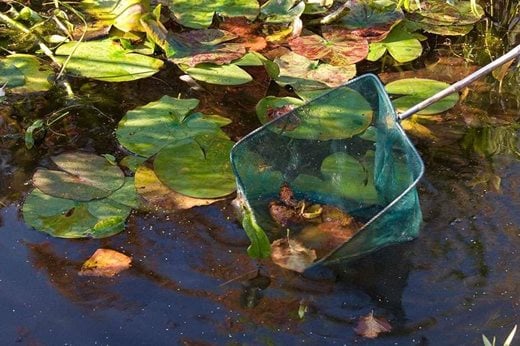 General maintenance
General maintenance
Don’t be worried if a few leaves fall into the pond. However, if leaf fall is excessive
cover the surface of ponds with netting. Accumulated debris in the pond can encourage growth of algae and weeds.
Top up water levels can drop a little at this time of year, particularly during warmer weather, but only top up if you have a fish pond – wildlife ponds will cope and can wait for the autumn rains. Continue to remove blanket and duckweed.
Remove dead leaves from waterlilies as the foliage dies back. And cut back overgrown marginal plants. You may need to thin out submerged oxygenating plants, as they can quickly build up and crowd the pond.
A visually pleasing pond usually has around 50 percent of the water’s surface visible; it doesn't hurt wildlife to have a pond with fuller planting but remember that pond plants grow rapidly and it can be hard to remove growth once it has become very dense, especially if it has rooted into the pond sediment.
Troubleshooting
Waterlilies can be prone to fungal problems such as crown rot and leaf spot, so nip any problems in the bud by dealing with them promptly. Remove affected leaves, reduce watersplash from fountains and, if necessary, repot the whole plant in fresh compost after first removing all rotten looking bits of root, stem and leaf.
If sediment has built up at the bottom of the pond, now is the time when wildlife will be least disturbed. Lower the water levels first and any fish to a hold tank if present. Remove the mud and debris from only one half of the pond to allow creatures to recolonise.

